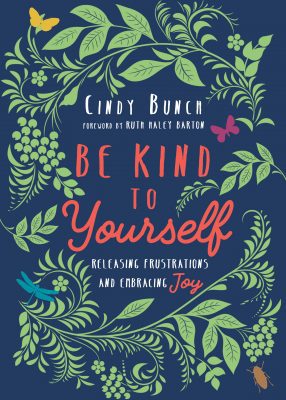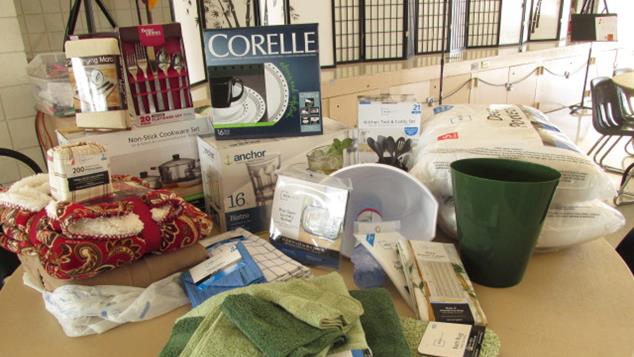“Notice when you are bugged.” That statement stopped me short as I was reading Gem and Alan Fadling’s book. “What Does Your Soul Love?” The things that bug me can form a low hum in my brain throughout a day. They can spoil—or threaten to spoil—the other lovely moments of the day.
I took that statement and made it into a question. Then I decided to make it a part of a daily practice. I would think about the past day and write down the answer to just two questions:
- What’s bugging you?
- What’s bringing you joy?
Creating that simple practice has been a great help to me. As I lean into it, I see where I am hooked into negative thought patterns about myself or others and recognize what I need to let go of. I also see what brings me joy. And each day brings a new opportunity to lean into that as well. The more I understand about what’s bugging me and free myself of that, the more I am able to embrace opportunities for joy. It’s part of what I am learning about being kind to myself.
Self-kindness
The ways that we talk to ourselves about the things that are bugging us are a part of a practice of self-kindness. What do I say to myself when what’s bugging me is the way that I escalated a small matter into a situation where I yelled at my husband? How do I process those moments when I am passed over at work? Or when a friend makes a hurtful comment? Or even something as mundane as getting stuck in an hour-long customer service call with no satisfaction?
As we learn new ways of dealing with the moments of difficulty in each day, we make space for the moments of joy to take greater hold of us.
Scripture tells us to “love your neighbor as yourself” (Mark 12:31). And we may have even heard it noted in a sermon that we should not neglect ourselves as we care for others. But often that is simply said in passing as we focus on being of service to the world. Giving our attention to what it means to love ourselves may feel selfish. Yet even Jesus took time away from the crowds he was teaching to pray (Luke 5:16).
Another benefit of this increased self-kindness is that when we are tender with ourselves, we cultivate a greater tenderness and empathy toward others. It is a fruit of goodness to ourselves that we increase in goodness toward our neighbor. Anne Lamott describes how she learned from others who were getting sober that “extending ourselves to others would help us stay sober and sane.” The pattern of getting a sponsor in AA follows this principle. But then Lamott continues, “They also wanted us to extend ourselves to our own horrible selves, at our most ruined, to speak gently to ourselves, get ourselves a lovely cup of tea.” For many of us, offering grace to ourselves is harder than extending grace to others.
Over time I have discovered practices that have helped me to identify and work with the daily pain I carry and also to embrace the things that bring me awareness of God’s very good gifts. They offer assistance in the journey into deepening joy—not a guilt-inducing catalog of things to do.
Shame-free examen
I have long struggled with the traditional understanding of how to practice examen, a pattern of prayer that comes from Saint Ignatius, the sixteenth-century mystic and founder of the Jesuits. The basic idea is to take a bit of time in the evening to sit and mentally review the day—play it through like a movie. As you do so, notice where you felt close to God (moments of consolation), and notice where you felt far from God (moments of desolation). To me, this practice always felt like another way to feel bad about myself—a way to review and recall all of my sin for the day. While I know it’s good to remember my sin so that I can confess it to God, the review would throw me into a place of shame. Further, doing it at night reminded me of all the things I could be worrying over just as I was trying to go to sleep. For me, it was not a good combination.
Using these two simple daily review questions took the edge off the pain and made the practice more accessible to me. A further tweak for me was to review the previous day in the morning. I was already in a morning routine of spiritual reading and journaling, so it fit right in. I spend a few moments thinking about the day that has passed. Then I write in my journal the answers to the two questions numbered with a 1 and a 2.
For a season I had a 30-day booklet in which I wrote down the answers to my two questions. Each day I pasted in an image clipped out of magazine pages to represent one or both of my responses. (I keep a little stash of evocative magazine images—more about this can be found in the description of collage practice, chapter seven.) This gave me something tactile to do as I mused on the day and allowed me to focus more deeply. Finding the images drew out different aspects of what I was feeling.
Practice: A Daily Record
Tackling the examen from the approach of what’s bugging me and what’s making me happy keeps me out of the sinkhole of shame. The things that bug me are—of course—not completely outside myself. The truth is that things that bug me the most are often the personal encounters that go wrong. Or they may be things that are causing me worry or anxiety, running a never-ending mental loop. My part in it is my own response—whether simply internal or expressed.
These questions have made me more aware of the things I hold on to each day. The things that pull me down. The things that keep me from noticing that God is near and is constantly drawing me in.
Noticing what’s bugging us may be an opportunity to let go of some expectations we are holding on to and step into a new way of being. Then we can turn toward cultivating joy. Because life is all mixed up like that—the good and the bad mingle together. As we pay attention to God’s daily presence near us, we discover the antidote to what’s bugging us: embracing and being grateful for the daily moments of joy. As we discover what we already know about ourselves and about God, we can live into joy more fully with the choices we make each day.

Adapted from Be Kind To Yourself by Cindy Bunch. Copyright (c) 2020 by Cynthia Bunch. Published by InterVarsity Press, Downers Grove, IL. www.ivpress.com
Do Good:
- Read “Be Kind To Yourself ” by Cindy Bunch (InterVarsity Press, 2020).
- See how you can get involved in the Fight for Good with The Salvation Army.
- Did you know The Salvation Army served more than 23 million Americans last year fighting hunger, homelessness, substance abuse and more—all in a fight for good? Where can you help? Take our quiz to find your cause and learn how you can join in today.

















